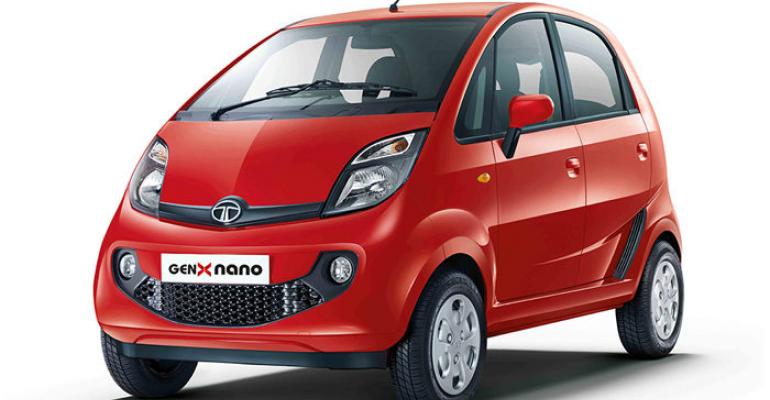MUMBAI – After more than two years of falling sales and declining market share, Tata gears for a comeback with a new strategy.
India’s fourth-largest automaker is expanding its network into the country’s remote interior and is planning doorstep service for customers. It has lined up contemporary new models and begun offering an automatic manual transmission as well as power steering.
The first round of new-model launches occurred several months ago with the debuts of the Zest sedan and Bolt hatchback. The initial enthusiastic reception has tailed off, with one would-be buyer saying after a test drive: “It drives really well and the features are impressive. But I would prefer to go with tried and tested models.”
The Bolt, moreover, was considered overpriced at Rs600,000-Rs900,000 ($9,700-$14,500). Tata offered a Rs45,000 ($725) discount in addition to deducting the trade-in value of the buyer’s old car, but slashing the price of a model that had been on the market only three months made a poor impression on consumers.
Tata has been selling about 1,500 Bolt and 2,500 Zest models a month, while bigger rivals Maruti Suzuki and Hyundai deliver up to 10 times as many comparable models. A Tata executive contends the problem is not product quality but the downmarket image the Tata brand has acquired since the low-cost Nano launched five years ago.
Tata looks to rehabilitate the Nano with an overhauled version called the GenX, positioned in the market as a city car with 21 variants.
Touted on Facebook before its market launch earlier this month, the Nano GenX features a 5-speed automatic manual transmission, power steering, a high-quality audio system with Bluetooth connectivity, fold-flat rear seats and improved noise, vibration and harshness.
The revamped Nano, powered by a rear-mounted 0.6L 2-cyl. engine, is competitively priced between Rs200,000-Rs290,000 ($3,125-4,530). Equipped with manual transmission it achieves fuel economy of 58.1 mpg (4.1 L/100 km) and with the automatic manual, 51.5 mpg (4.6 L/100 km).
“This Nano has been positioned as the next-generation car and has been named accordingly,” says Delna Avari, head of Tata marketing services.
Adds Girish Wagh, senior vice president-product planning and the original Nano’s chief engineer, “This is a make-or-break opportunity for Tata.”
Tata plans to market the Nano GenX in all the 651 state and territorial districts of India and to open one dealer outlet every day until it reaches 1,500 in five years. Today it only has 460 outlets in 200 districts.
Mayank Pareek, president-passenger vehicle unit, believes Tata will see double-digit growth in 2015-16. He has started a pilot project in three cities for introducing doorstep maintenance service with mobile vans. And he is confident that about a dozen new models in the next five years will fill the gaps in Tata’s range of models.
Tata plans to introduce an advanced modular platform in 2018. It will be a flexible standard platform for the entire range of Tata hatchbacks, sedans, SUVs and multipurpose vehicles powered either by diesel or gasoline engines.
In a statement filed with the Bombay Stock Exchange, Tata states it and its Jaguar Land Rover subsidiary plan capital spending of Rs100 billion ($1.6 billion) over the next two years. Tata also will raise its investment in R&D from 3.3% of sales to 6.3% and JLR will raise its R&D outlay from 6.6% to 12%.




